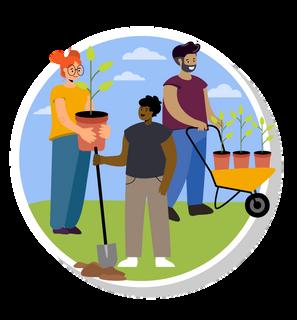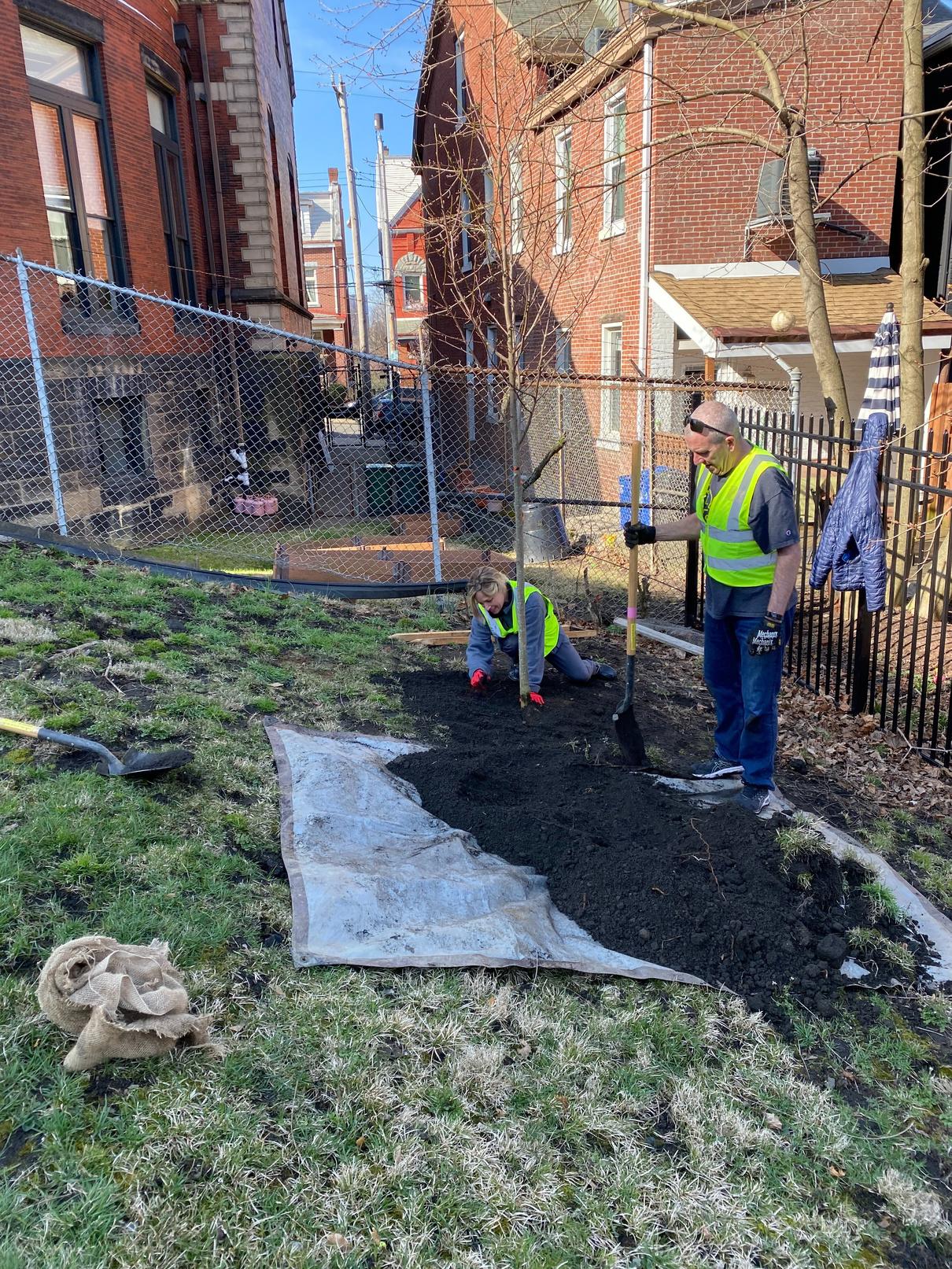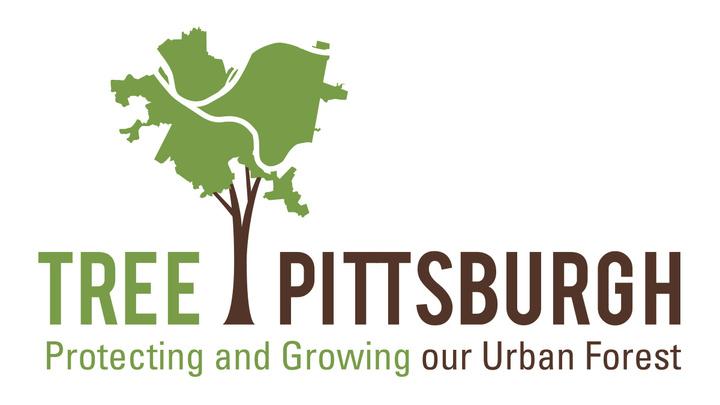How are we doing?









Lawrenceville


















How are we doing?









Lawrenceville

















Thank you to all those that played a hand in perpetuating the goals of ReLeaf From the steering committee to the volunteers that carried out the plan, these efforts have not gone unnoticed. The success of ReLeaf Lawrenceville was driven by both groups and while we cannot thank everyone individually, the following highlights some of the people that contributed their time and hard work

 Christine Brill
Christine Brill
Stacy Desai
Lauren Byrne Connelly
Emily Persico
LAWRENCEVILLE UNITED
David Breingan
Helen Gerhardt
Prem Rajgopal
Lisa Ceoffe ErbHow are we doing?
The purpose of this ReLeaf Review is to answer the question how are we doing? Since the beginning of ReLeaf Lawrenceville in 2015, the urban forest has undergone changes directly related to ReLeaf Lawrenceville's efforts, community development, and storm damage. The new data accounted for in the How Are We Doing stage will help create a clearer picture moving forward Conclusions drawn from this picture can help direct future plans and goals

The plan was guided by Tree Pittsburgh, a non-profit environmental organization dedicated to protecting and restoring Pittsburgh’s urban forest through community tree planting and care, education, advocacy, and land conservation. Tree Pittsburgh worked closely with a local steering committee to understand the opportunities and challenges within Lawrenceville. The framework for the process was based on understanding what we have, what we want, how we get there, and how we are doing This process is referred to as adaptive management and is commonly used for resource planning and management
The state of Lawrenceville’s tree canopy is outlined in the original ReLeaf plan.

What do we want?
Gathered public feedback that directed ReLeaf Lawrenceville's goals
Goals and recommendations based on the What do we have and What do we want sections of ReLeaf Lawrenceville.
Monitoring and evaluation are keys to success for the implementation of this plan. This is the first comprehensive look back at the last 5 years to track success and opportunities

How are we doing?
Since 2005, the City of Pittsburgh along with many partners began collecting valuable data on Pittsburgh’s urban forest.
Tree Pittsburgh has completed several urban tree canopy assessments to better understand the changes in the urban forest. The initial assessment was completed in 2011 using 2010 LiDAR imagery of Allegheny County. Another tree canopy assessment was completed in 2015 and the tree canopy was compared between the two data sets Tree Pittsburgh found considerable tree canopy loss throughout Allegheny County This loss in the canopy is due to numerous factors including increasing storm damage, community development, pests, and diseases.

The following is a look back on the state of Lawrenceville’s urban forest Evaluating how the tree canopy has changed since the implementation of the ReLeaf program will help direct future efforts of ReLeaf Lawrenceville. In 2015, the City of Pittsburgh had a tree canopy of 42% Tree canopy in Upper Lawrenceville was 14%, Lower Lawrenceville was 12%, and Central Lawrenceville was 30% All three neighborhoods are well under the city average and efforts from ReLeaf Lawrenceville are working to grow and protect the canopy coverage through tree plantings and maintenance efforts. The following maps outline the canopy change across the Lawrenceville neighborhoods from 2010 to 2015 These maps tell the story of each neighborhood's canopy, and demonstrate the need for continued ReLeaf efforts as the neighborhoods continue to experience loss The loss shown on the maps is due to storm damage and development.


How are we doing?

From 2015 to 2020, Upper Lawrenceville lost 7 07 acres and gained 11 13 acres Most canopy losses occurred in small isolated patches and gain was seen along tree-lined streets. Upper Lawrenceville saw the biggest overall gain from 2015-2020 as the canopy coverage shifted from 17 6%* to 19 2%
*Numbers have been updated to reflect advancements in data collection and may not reflect the values reported in previous ReLeaf plans

From 2015 to 2020, Central Lawrenceville lost 20 31 acres and gained 26 42 acres Central Lawrenceville features Allegheny Cemetery which provides a large area of canopy coverage, but this area is speckled with areas of loss. Central Lawrenceville saw an increase in canopy coverage from 31 3%* in 2015 to 32 4% in 2020
*Numbers have been updated to reflect advancements in data collection and may not reflect the values reported in previous ReLeaf plans

From 2015 to 2020, Lower Lawrenceville lost 7 22 acres and gained 9 55 acres
Lower Lawrenceville mostly saw isolated areas of loss with one area of loss due to development. Lower Lawrenceville saw the least gain of the three neighborhoods with a canopy coverage of 12 1%* in 2015 which rose to 12 9% in 2020
*Numbers have been updated to reflect advancements in data collection and may not reflect the values reported in previous ReLeaf plans.

One of the metrics used to gauge the success of ReLeaf efforts includes a new global standard that has been introduced called the 3:30:300 Rule.

This new global standard set goals that each household should be able to see 3 trees from their home, there should be 30% canopy coverage per neighborhood, and residents should be able to walk at most 300 meters to a local public greenspace. Using this rule sets a standard that access to a thriving urban canopy should be equally accessible throughout a neighborhood. The 3:30:300 rule was introduced by Professor Cecil Konijnendijk van den Bosch, the Nature Based Solutions Institute Program Director, in February of 2021 He suggested that it is difficult to capture the wide range of benefits provided by an urban forest, this rule captures environmental benefits from the number of trees and canopy coverage data while also capturing social benefits through park accessibility This outlines a minimum standard for meaningful access to tree canopy and its benefits in urban areas regardless of location Ideally, urban areas would exceed these numbers and have more access to tree canopy than the base values of 3:30:300
Using this standard to assess the state of Lawrenceville’s urban forest, a sample of Lawrenceville residents were asked if they were able to see three trees from a window in their home Of the 40 residents asked, 25 could see three trees from their window The average canopy coverage for the three Lawrenceville neighborhoods is 19%, setting it below the 30% canopy coverage goal The final goal is to have all households within 300 meters of park space. Public greenspace accessibility will be restricted to cityowned parks for the purpose of this document, as the intent is a space that provides multiple opportunities for recreation/enjoyment of nature in an area 1 hectare or larger (2 5 acres) The following maps demonstrate a 300-meter range from parks located in each neighborhood of Lawrenceville. Applying this to Lawrenceville demonstrates areas of improvement around the neighborhoods. For example, areas that do not have access to the 300-meter park buffer demonstrate areas in need of greenspaces.
Illustration from SpringerLink website https://link.springer.com/article/10.1007/s11676-022-01523-z/figures/1




 Volunteers plant a new tree at the Stephen Foster Center in the Spring of 2022
Local volunteers and volunteers from Duquesne Light Company put the finishing touches on a newly planted tree in the Allegheny Cemetery
Volunteers plant a new tree at the Stephen Foster Center in the Spring of 2022
Local volunteers and volunteers from Duquesne Light Company put the finishing touches on a newly planted tree in the Allegheny Cemetery
Tree care is vital to maintaining a healthy existing canopy and for the longevity of young trees. Tree Pittsburgh has partnered with Tree Tenders, volunteers, and volunteer groups from local businesses to best implement tree care activities on Lawrenceville’s public trees These efforts include removing invasive species, Mulching Parties, and Pruning Workshops. The ultimate goal of these tree maintenance efforts is to reduce long-term maintenance costs and extend the lifespan of these trees Removing invasive species, specifically vines such as Oriental Bittersweet, can increase the overall success of trees Invasive vines use trees to climb and gain access to sunlight, but can weigh down and harm trees in the process. Leveraging volunteer efforts to reduce the vine coverage create a more successful environment for the trees. Mulching Parties involved weeding and mulching street tree pits. The weeds in tree pits can compete with the tree for water and reduce the success of a tree By removing the weeds and adding mulch to the tree pit, the tree receives nutrients and has less competition for water resources Pruning Workshops are invaluable in providing structural training for young trees. Tree Pittsburgh works specifically with Certified Tree Tenders led by a Certified Arborist to carry out Pruning Workshops across the neighborhoods of Lawrenceville by targeting newly planted or younger trees

How are we doing?

The Lawrenceville Tree Tenders have been crucial in the implementation of ReLeaf efforts These volunteers are trained and certified through an 8-hour Tree Tender Training Course to lead and assist in tree planting, tree care events, and tree advocacy and awareness. Trained volunteers like Tree Tenders help champion efforts across the three neighborhoods of Lawrenceville Lawrenceville Tree Tenders lead their own monthly meetings, care for the Lawrenceville Tree Park, and assist with organizing numerous tree-related volunteer events. Tree Pittsburgh has trained 111 Tree Tenders in Lawrenceville since the program began in 2007. The Tree Tender Course is continually offered to increase the number of trained Tree Tenders in Lawrenceville and across the region Tree Tender Courses have been offered to the general public virtually and in person at Tree Pittsburgh’s campus in Lawrenceville In the Fall of 2021, a free Tree Tender training course was offered exclusively to the residents of ReLeaf communities, including Lawrenceville. Participants in the course learn about topics such as proper planting techniques, common pests or diseases, and correct pruning practices Once they have completed the course, residents are certified and better equipped to help with tree care and planting events These education efforts have generated 31 new Tree Tenders from 2015 to 2022
Tree Tender efforts at the Lawrenceville Tree Park are not captured in the metrics of this report Tree Park workdays are frequent and lead independently from Tree Pittsburgh ReLeaf efforts


How are we doing?
ReLeaf Lawrenceville works to empower neighborhood volunteers with direction and projects to protect and increase the community’s tree canopy Lawrenceville Tree Tenders partnered with local parks, organizations, businesses, and volunteers to work towards increasing tree canopy Steering Committee members held meetings to guide plans and identify planting projects in Lawrenceville. Lawrenceville Tree Tenders continually engage property owners to increase the number of street trees planted and submit TreeVtialize applications for nearly every round of funding
Lawrenceville is home to parks such as Arsenal Park, Duncan Park, 57th Street Playground, Leslie Park, McCandless Park, Sullivan Park, and World War I Memorial Park. Though there are numerous parks, there have not been many tree plantings in parks since the beginning of ReLeaf Lawrenceville. The lack of plantings is partially due to anticipated renovations in parks, including Arsenal Park and Leslie Park Continued ReLeaf efforts championed a park planting of 19 trees in Arsenal Park on April 2, 2022 Combined efforts from the community, a corporate group, and Tree Pittsburgh staff ensured a successful planting These parks have also served as locations for outreach tabling events Tree Tenders and Tree Pittsburgh staff members have tabled at the farmers market in Arsenal Park to engage with community members about various tree topics, including tree benefits and ReLeaf efforts in their neighborhood Duncan Park received 14 fruit-bearing trees in a planting effort led by Tree Tenders and Lawrenceville United in the fall of 2021
Other green spaces in Lawrenceville include the Lawrenceville Three Rivers Heritage Trail, which leads to a dog park There have been numerous plantings on this trail, including containerized and balled and burlapped trees. These plantings aim to shade out invasive species and increase canopy coverage along the trail The most recent planting along the Three Rivers Heritage Trail planted 25 trees with the help of a corporate group on October 27, 2021 Allegheny Cemetery welcomed its first planting in years on October 22, 2021, by planting 20 new trees with the help of local volunteers and Duquesne Light Company Efforts from Tree Pittsburgh staff resulted in 14 trees being planted on Tree Pittsburgh’s campus and 7 in Lawrenceville Tree Park. The Stephen Foster Center also received 10 new trees on May 7, 2022 as part of continued ReLeaf efforts

How are we doing?


Pittsburgh has offered residential tree sales or ions throughout the city.




1, Tree Pittsburgh held a Tree Adoption event for residents wrenceville This provided an opportunity for residents with e property to take home a tree at no cost to help grow the canopy from their own yards Sixty trees were adopted in pril 2021 kickoff event A second Tree Adoption was held in pring of 2022, resulting in the distribution of 165 trees. A doption event was held in the Fall of 2022, with 110 trees ed Lawrenceville Corporation and Lawrenceville United ered with Tree Pittsburgh to hold the adoption events at a pop-up market and the Lawrenceville Farmers Market. tising for these events was primarily kept to local sources to e promotion was targeting Lawrenceville residents Of the ees adopts over the course of these events, 259 trees went y to Lawrenceville households.
How are we doing?
Efforts to increase street trees around the neighborhood included completing surveys to create an inventory of plantable sites.



Technology including an iPad equipped with TreeKeeper inventory software was utilized to access city parcel data for the most accurate addresses. Staff from Tree Pittsburgh and Lawrenceville United worked to complete an inventory of all three neighborhoods Lawrenceville United then used these addresses to target TreeVitalize street tree applications. The goal of this project was to create a more focused effort for future street tree plantings.
How are we doing?
ReLeaf Lawrenceville has created the opportunity for partnerships to further the goals of ReLeaf.


Lawrenceville United and Lawrenceville Corporation have been strong partners in implementing ReLeaf Lawrenceville. Lawrenceville United has worked to collect tree request forms, hosted an adoption event, and supported planting projects. Lawrenceville Corporation hosted two tree adoption events and also helped collect tree request forms Other organizations including corporate groups have opted to volunteer with Tree Pittsburgh in ReLeaf efforts including FedEx and McConway & Torley.
How are we doing?

ough the lens of the 3:30:300 Rule, it was demonstrated that dents are able to interact with trees from their homes and ugh park resources.

unteers and Tree Pittsburgh employees have implemented tree care nts and tree plantings since the inception of ReLeaf Lawrenceville are aimed at combating canopy loss Partnerships with other profit and corporate groups have helped support and grow ReLeaf rts. These efforts will take time to become evident in the data and efore are not fully captured yet in this look-back report Future eaf projects are dependent on the continued support of renceville Tree Tenders, local volunteers, and guidance from Tree sburgh. These future projects will continue to perpetuate the goals vision of ReLeaf Lawrenceville
rall, this report demonstrates that the Lawrenceville community is cated to growing the urban forest in their neighborhood Volunteers employees of Lawrenceville United, Lawrenceville Corporation, and e Pittsburgh have continued to carry out tree care events and tree tings since the implementation of ReLeaf Lawrenceville, all aimed at combating canopy loss These efforts will take time to become evident in the data and therefore are not fully captured in this look-back report but will be evident in years to come. While these efforts may not show up in the data just yet, metrics including the 3:30:300 rule demonstrate that the residents of Lawrenceville are able to interact with trees and park resources, thanks to the committed efforts of the ReLeaf Lawrenceville steering committee and other neighborhood volunteers.



How are we doing?









